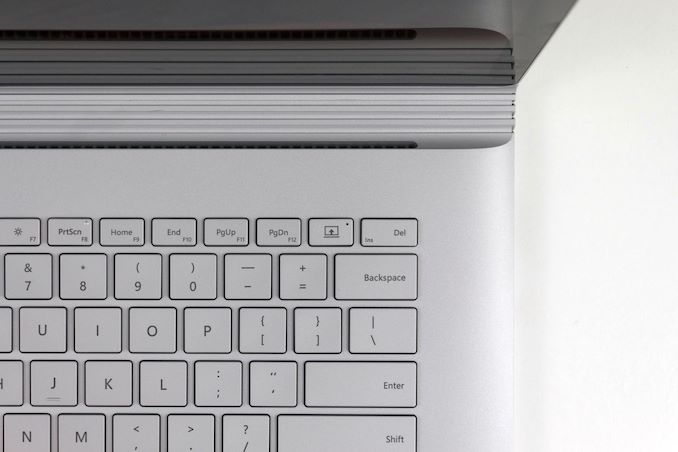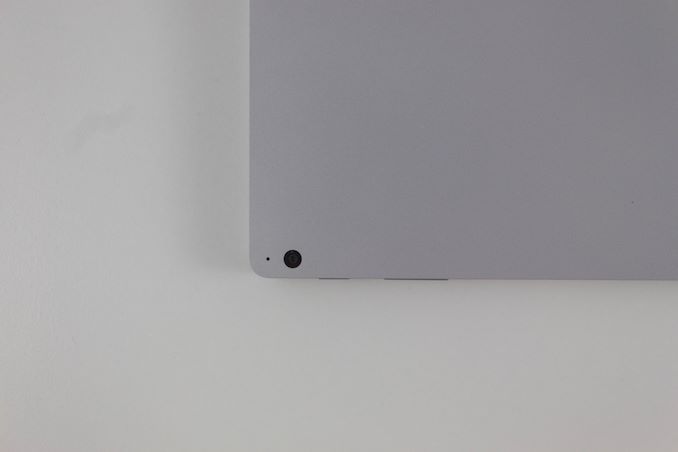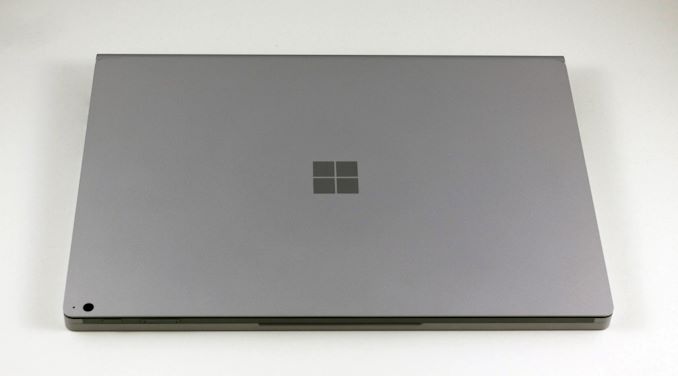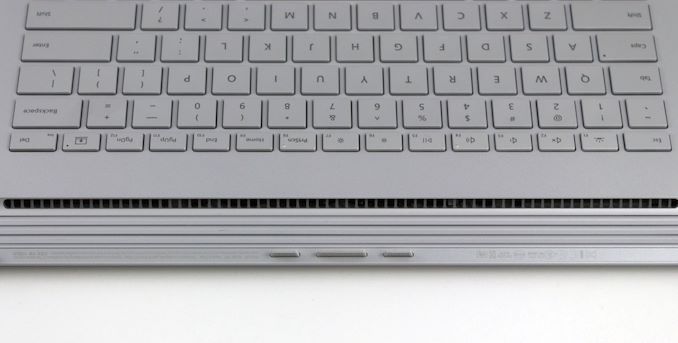The Microsoft Surface Book 3 (15-Inch) Review: A Refreshing Dip Into Ice Lake
by Brett Howse on June 3, 2020 9:00 AM ESTFinal Words
The Surface Book 3 delivers a solid refresh to Microsoft's detachable laptop family, offering more of almost everything. There is more performance thanks to the new Core i7-1065G7 and GeForce GTX 1660 Ti. There is more RAM thanks to the switch to LPDDR4X. The new 10 nm processor provides better battery life. The Wi-Fi is much improved thanks to the new Intel AX201 Wi-Fi 6 adapter. Even the USB ports got an upgrade to USB 3.2 Gen 2, while the Surface Connect port now offers the same 3.2 Gen 2 speeds along with DisplayPort 1.4 for dual-UHD external monitor support. If you loved the idea of the Surface Book 2 but thought it was a bit long in the tooth or otherwise underpowered, the new Surface Book 3 delivers all of the upgrades needed to keep it a proper current generation notebook.
Surface devices have always offered a great build quality, and the Surface Book 3 continues that legacy with its magnesium alloy chassis. Microsoft has improved the undocking mechanism to make it faster, and improvements to DirectX 12 mean that the system is finally able to automatically migrate active workloads from the discrete GPU to the integrated one when detaching, at least as long as the active application supports this.
The Surface Book 3, like the Surface Book 2, offers one of the best typing experiences on any notebook, and couples it with one of the best trackpads around. The display is still identical to the outgoing model, but that display is also one of the best available on a notebook, so it is hard to fault them for keeping it.
Microsoft still includes 1080p video recording support, with a 5 MP front facing camera and 8 MP rear facing camera, and coupled with the dual far-field microphones makes the Surface Book 3 an ideal, if somewhat overpowered, video conferencing device.
There is no denying that the upgrades have worked well. If there was a complaint, it would be that this is now the third generation of more or less the same design, and while a design that is still impressive, it also is showing its age. The large display bezels, while partially required due to the convertible nature of the Surface Book, stand out in a premium device in 2020. The lack of Thunderbolt 3 support is also an increasingly glaring omission when all of their competitors offer it. It took Microsoft a long time to adopt USB Type-C for reasons only they seem to understand, and while it is nice to finally have that, a universal docking solution over Thunderbolt 3 would serve them well.
The Surface Book 3 still does fulfill its role though as a very powerful laptop, built with premium materials, and offering some unique features. The upgrades for 2020 were necessary to keep the design relevant, even if is relatively unchanged on the outside. The new configuration options, especially the ability to purchase it with 32 GB of RAM, opens up the device to those who need a lot of RAM for their workflows, and being able to purchase it with Quadro RTX also opens the door to some new mobile workstation use cases. Surface Book is never going to be the sales leader in the Surface lineup, mostly due to the price, but there is no denying that it is still one of the best notebooks on the market.














125 Comments
View All Comments
Deicidium369 - Friday, June 5, 2020 - link
I'm saying that Dell builds what sells - they are pretty good at it. I would never buy a Dell desktop or workstation - but for ultrabooks / 2-in-1s and monitors - I am pretty well in the Dell camplmcd - Thursday, June 4, 2020 - link
Oh come on if you spent more than 10 seconds on Dell's website you'd know why.Dell is a corporate company through and through and every one of their laptops supports a dock. Dell docks are 90% TB3 docks. Integrating TB3 with AMD is possible but not easy right now. The turnaround time would be impossible for this laptop launch cycle.
Spunjji - Thursday, June 4, 2020 - link
This reply makes no sense WRT their gaming designs, though.lmcd - Thursday, June 4, 2020 - link
That's a fair critique, but the only gaming designs we've seen are ASUS, no? They were the preferred partner. Don't think AMD has enough "preferred partner" teams to hit up every laptop brand.Retycint - Thursday, June 4, 2020 - link
Did you not read his comment at all? Longer lead times, due to customized components etc. Not to mention the perceived brand differences in average consumers' mindslmcd - Thursday, June 4, 2020 - link
Why did you even reply if you can't read the comment? "And premium laptops have a longer lead time than simpler value and gaming designs."Fataliity - Sunday, June 14, 2020 - link
Renoir only came out 3 months ago. Lead times, especially for redesigning for a new motherboard and all, are about 12 months.Plus Intel has a lead in the size of their motherboard form factors for devices like this. It's not just the processor.
Spunjji - Thursday, June 4, 2020 - link
Microsoft put AMD's last-gen chips in some of their premium devices. It's almost like they already very pointedly developed the ability to second-source even when performance leadership wasn't there...(I can actually understand them not doing so in this specific instance. They barely got their drivers functional for the Intel / Nvidia combo, I don't think they'd have a good time redoing the whole thing for AMD)
We already know that Tiger Lake is a 4-core part at 15W (TDP-down from 28W), so I guess we'll see how things look in a year's time.
Deicidium369 - Friday, June 5, 2020 - link
Would there be significant changes between that APU vs the 4000 series? Can't imagine MS doing it for no reason - but there are pretty long lead times ... that's a bit of a halo (no pun intended)product for MS.Spunjji - Friday, June 5, 2020 - link
I genuinely don't know the answer to that. The desktop models are going to be compatible with the same socket and chipset, so I wouldn't have thought they'd need to do an extensive redesign moving from 3000 to 4000 series APUs - but then 4000 enables the use of things like LPDDR4X, so I may be entirely wrong.It's taken MS long enough to refresh this product that I'm sure you're right about the lead times.